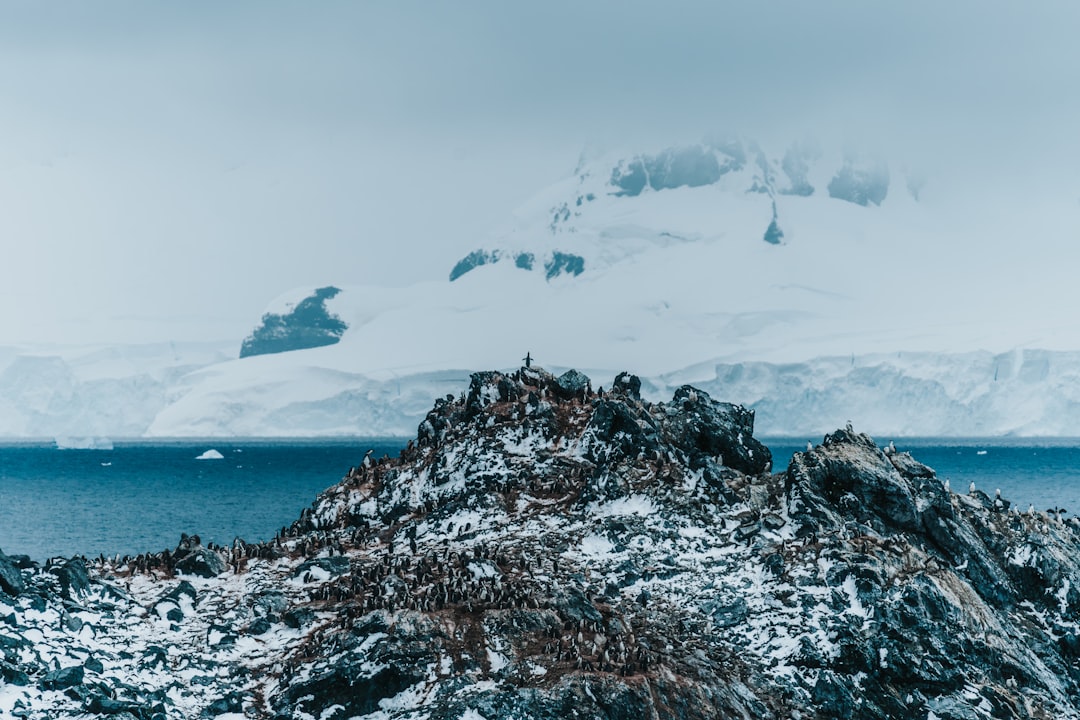The Kapal Drake Passage, often simply referred to as the Drake Passage, is a body of water that separates South America from Antarctica. It is renowned for its turbulent waters and unpredictable weather patterns, making it one of the most challenging maritime routes in the world. Stretching approximately 800 kilometers (500 miles) from the southern tip of South America to the Antarctic Peninsula, the passage serves as a critical conduit for vessels traveling between the Atlantic and Pacific Oceans.
The unique geographical positioning of the Drake Passage allows for the mixing of cold Antarctic waters with warmer currents from the north, creating a dynamic marine environment that is both rich in biodiversity and fraught with peril. Navigators and sailors have long been fascinated by the Drake Passage, not only for its natural beauty but also for its historical significance. The passage has been a key route for explorers, scientists, and adventurers seeking to uncover the mysteries of Antarctica.
Its waters have witnessed countless expeditions, each contributing to our understanding of this remote region. The passage is named after Sir Francis Drake, an English sea captain and explorer who was one of the first Europeans to navigate these treacherous waters in the late 16th century. Today, the Drake Passage continues to be a vital area for research and exploration, drawing attention from marine biologists, climatologists, and ecologists alike.
Key Takeaways
- The Kapal Drake Passage is a treacherous stretch of water between South America’s Cape Horn and the South Shetland Islands of Antarctica.
- The dangers of the Drake Passage include extreme weather conditions, rough seas, and strong winds, making it one of the most challenging maritime routes in the world.
- Tips for navigating the Drake Passage include careful route planning, staying updated on weather forecasts, and ensuring the vessel is well-equipped for the journey.
- Weather conditions in the Drake Passage are unpredictable and can change rapidly, with frequent storms and high waves posing significant challenges to navigation.
- Safety precautions for crossing the Drake Passage include securing all loose items on board, wearing appropriate safety gear, and having emergency protocols in place in case of unforeseen circumstances.
The Dangers of the Drake Passage
The Drake Passage is infamous for its rough seas and unpredictable weather conditions, which can pose significant dangers to vessels traversing its waters. The confluence of the Atlantic and Pacific Oceans creates powerful currents and swells that can reach heights of up to 15 meters (50 feet). These conditions are exacerbated by strong winds that can whip across the passage at speeds exceeding 100 kilometers per hour (62 miles per hour).
Such extreme weather can lead to sudden storms that catch even experienced sailors off guard, making navigation a daunting task. Moreover, the isolation of the Drake Passage adds another layer of risk. With vast stretches of open water and limited access to emergency services, vessels caught in distress may find themselves far from help.
The remoteness of the region means that rescue operations can be complicated and time-consuming. Additionally, the cold temperatures of the water can pose a serious threat to those who find themselves overboard or stranded at sea. The combination of these factors makes the Drake Passage a formidable challenge for even the most seasoned mariners.
Tips for Navigating the Drake Passage

Successfully navigating the Drake Passage requires careful planning and preparation.
Understanding the patterns of wind and wave activity can help mariners choose the best time to cross, potentially avoiding the worst conditions.
Additionally, having a flexible itinerary allows for adjustments based on real-time weather updates, which can be vital in ensuring safety. Another important consideration is vessel readiness. Sailors should ensure that their ships are equipped with appropriate safety gear, including life jackets, flares, and emergency beacons.
Regular maintenance checks on navigation equipment and communication devices are essential to avoid malfunctions during critical moments. Furthermore, having a well-trained crew familiar with emergency protocols can make a significant difference in managing unexpected situations that may arise during the crossing.
Weather Conditions in the Drake Passage
| Month | Average Temperature (°C) | Wind Speed (km/h) | Precipitation (mm) |
|---|---|---|---|
| January | 5 | 35 | 80 |
| February | 4 | 40 | 90 |
| March | 3 | 45 | 100 |
| April | 2 | 50 | 110 |
| May | 1 | 55 | 120 |
The weather conditions in the Drake Passage are notoriously volatile, characterized by rapid changes that can occur within minutes.
This results in frequent storms, heavy rainfall, and sudden temperature drops that can catch sailors unprepared.
The passage is particularly known for its strong westerly winds, which can create formidable waves and challenging sailing conditions. During certain times of the year, particularly in winter months, icebergs may also pose additional hazards to navigation. These floating masses of ice can drift into shipping lanes, creating obstacles that require careful maneuvering.
Mariners must remain vigilant and maintain a watchful eye for these hazards while also being prepared for sudden shifts in weather that could impact visibility and sea conditions.
Safety Precautions for Crossing the Drake Passage
Safety precautions are paramount when crossing the Drake Passage due to its inherent dangers. One of the most effective measures is to conduct thorough pre-departure briefings with all crew members. This ensures that everyone is aware of their roles and responsibilities in case of an emergency.
Additionally, practicing emergency drills can help familiarize the crew with procedures such as man-overboard rescues or abandoning ship. Another critical safety precaution is to equip vessels with advanced navigation technology. GPS systems, radar, and sonar can provide valuable information about surrounding conditions and potential hazards.
Furthermore, maintaining constant communication with other vessels in the area can enhance safety by sharing information about weather updates or navigational challenges. By prioritizing safety measures and fostering a culture of preparedness among crew members, sailors can significantly reduce risks associated with crossing this challenging passage.
Navigation Equipment for the Drake Passage

Navigating the Drake Passage requires specialized equipment designed to withstand harsh maritime conditions. High-quality GPS systems are essential for accurate positioning and route planning, allowing sailors to chart their course effectively through unpredictable waters. Additionally, radar systems play a crucial role in detecting obstacles such as icebergs or other vessels, enhancing situational awareness in low-visibility conditions.
In addition to traditional navigation tools, modern technology has introduced advanced software applications that provide real-time weather data and oceanographic information. These tools enable sailors to make informed decisions based on current conditions rather than relying solely on outdated charts or forecasts. Furthermore, having reliable communication equipment is vital for maintaining contact with shore-based support or other vessels in case of emergencies.
Wildlife and Marine Life in the Drake Passage
The Drake Passage is not only known for its challenging navigation but also for its rich biodiversity. The waters teem with marine life, including various species of whales, seals, and seabirds that thrive in this unique ecosystem. Humpback whales, orcas, and minke whales are commonly spotted during crossings, drawing wildlife enthusiasts eager to witness these magnificent creatures in their natural habitat.
In addition to larger marine mammals, the passage is home to an array of smaller species such as krill and various fish that form the foundation of the food chain in this region. The nutrient-rich waters support thriving populations of seabirds like albatrosses and petrels that glide gracefully above the waves. For researchers and nature lovers alike, observing this diverse wildlife adds an enriching dimension to any journey through the Drake Passage.
Historical Significance of the Drake Passage
The historical significance of the Drake Passage cannot be overstated. It has served as a gateway for explorers since the Age of Discovery when European navigators sought new trade routes and territories. Sir Francis Drake’s expedition in 1578 marked one of the first recorded crossings of this treacherous waterway, paving the way for future explorers who would follow in his wake.
Throughout history, many notable expeditions have traversed the Drake Passage, contributing to our understanding of geography, climate, and marine biology. The passage has also played a crucial role in scientific research related to climate change and oceanography as scientists study its unique currents and ecosystems. Today, it remains a focal point for ongoing exploration and study as researchers seek to unravel the mysteries of this remote region.
Popular Routes through the Drake Passage
Several popular routes traverse the Drake Passage, catering to various types of vessels ranging from research ships to luxury cruise liners. One well-known route connects Ushuaia, Argentina—the southernmost city in the world—to various destinations along Antarctica’s coastline. This route is favored by tourists seeking to experience the breathtaking landscapes and wildlife of Antarctica while navigating through one of its most challenging passages.
Another popular route involves expeditions aimed at scientific research or environmental monitoring. These journeys often focus on studying climate change impacts or conducting marine biology research in collaboration with international organizations. Regardless of purpose, each route through the Drake Passage offers unique opportunities for adventure and discovery while navigating its unpredictable waters.
Emergency Protocols for the Drake Passage
Given the inherent risks associated with crossing the Drake Passage, having well-defined emergency protocols is essential for ensuring crew safety during unforeseen circumstances. Vessels should establish clear communication channels among crew members so that everyone knows how to respond quickly in case of an emergency situation such as severe weather or equipment failure. Additionally, creating an emergency response plan that outlines specific actions to take during various scenarios—such as man-overboard incidents or medical emergencies—can significantly enhance preparedness levels among crew members.
Regular drills should be conducted to reinforce these protocols and ensure that all personnel are familiar with their roles during emergencies.
The Future of Navigating the Drake Passage
As climate change continues to impact global weather patterns and oceanic conditions, navigating the Drake Passage may evolve significantly in coming years. Researchers are closely monitoring changes in sea ice distribution and water temperatures that could affect shipping routes and wildlife populations within this region. Advances in technology may also lead to improved navigation systems capable of adapting to these changing conditions.
Furthermore, increased interest in Antarctic tourism raises questions about sustainable practices within this fragile ecosystem. Balancing exploration with environmental conservation will be crucial as more vessels traverse these waters in search of adventure or scientific discovery. The future of navigating the Drake Passage will likely involve a combination of innovation, responsibility, and respect for one of nature’s most awe-inspiring yet challenging maritime environments.
The Drake Passage, a notorious stretch of water between the southern tip of South America and Antarctica, is often considered one of the most treacherous sea routes in the world. For those interested in learning more about the geographical and historical significance of this passage, an insightful article can be found on MyGeoQuest. This article delves into the challenges faced by explorers and modern-day adventurers alike as they navigate these perilous waters. To explore this topic further, you can read the related article on the Drake Passage by visiting MyGeoQuest’s sample page.
WATCH NOW! Drake Passage: Earth’s Deadliest Waters Revealed
FAQs
What is the Drake Passage?
The Drake Passage is the body of water between the southern tip of South America and the northern tip of the Antarctic Peninsula. It connects the southwestern part of the Atlantic Ocean with the southeastern part of the Pacific Ocean.
What is a kapal in the context of the Drake Passage?
In the context of the Drake Passage, a kapal refers to a ship or vessel that is used for navigating the treacherous waters of the passage. These ships are specially designed to withstand the rough conditions of the area.
What are the characteristics of the Drake Passage?
The Drake Passage is known for its notoriously rough seas and unpredictable weather conditions. It is one of the most challenging maritime routes in the world, with strong winds, large waves, and potential for extreme weather.
Why is the Drake Passage significant?
The Drake Passage is significant because it represents the shortest and most direct route between Antarctica and the rest of the world. It is also a critical area for scientific research and exploration due to its unique oceanographic and ecological characteristics.
What are the challenges of navigating the Drake Passage?
Navigating the Drake Passage presents numerous challenges, including rough seas, strong winds, icebergs, and rapidly changing weather conditions. These factors make it a demanding and potentially dangerous route for ships and vessels.
